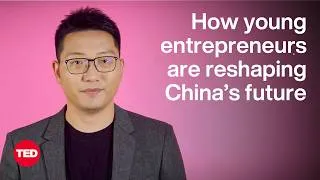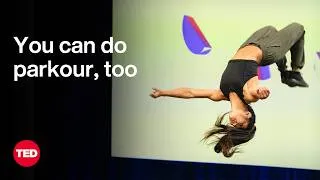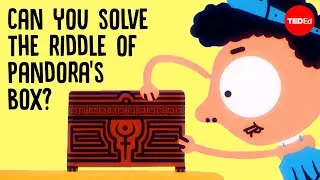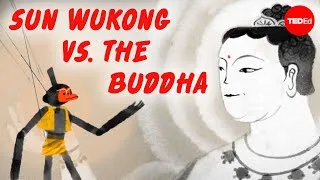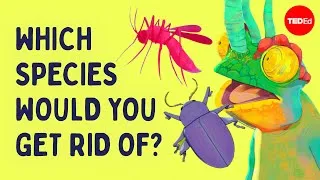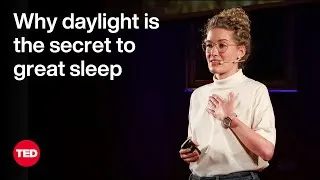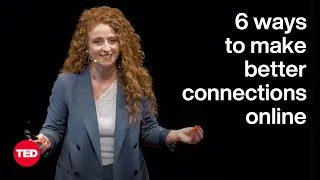Gyotaku: The ancient Japanese art of printing fish - K. Erica Dodge
魚拓──拓印魚的古老日本藝術 - 艾瑞卡道奇 (K. Erica Dodge)
536,438 views ・ 2013-05-30
請雙擊下方英文字幕播放視頻。
00:00
Translator: Andrea McDonough
Reviewer: Jessica Ruby
0
0
7000
譯者: Jephian Lin
審譯者: Allen Li
00:13
How big was that fish you caught?
1
13657
2088
你抓到的魚有多大?
00:15
This big?
2
15745
1087
這麼大?
00:17
This big?
3
17107
870
這麼大?
00:18
This big?
4
18485
1638
還是這麼大?
00:20
Without photographic evidence,
5
20123
1376
沒有照片當證據
00:21
there's nothing that proves you caught a whopper,
6
21499
2331
你就沒辦法證明你抓了一條大魚
00:23
and that's been true since the dawn of fishing.
7
23830
2721
自人類捕魚以來,一直都是如此
00:26
In fact, hundreds of years ago,
8
26551
2231
事實上,幾百年前
00:28
long before photography could capture the moment,
9
28782
2497
早在照片可捕捉瞬間前
00:31
Japanese fishermen invented their own way
10
31279
2182
日本漁民就發明了
一套自己的方法
00:33
to record trophy catches.
11
33461
1967
來記錄值得炫耀的戰利品
00:35
They called it Gyotaku.
12
35428
2721
他們把這技術叫魚拓 (Gyotaku)
00:38
Gyotaku is the ancient art of printing fish
13
38149
2783
魚拓,是把魚拓印下來的古老藝術
00:40
that originated in Japan
14
40932
1627
發源自日本
00:42
as a way to record trophy catches
15
42559
1753
用來記錄特殊的漁獲
00:44
prior to the modern day camera.
16
44312
2390
起源比相機還早
00:48
Gyo means fish
17
48362
1597
Gyo 的意思是魚
00:49
and taku means impression.
18
49959
2192
而 taku 的意思是拓印
00:52
There are several different stories about
19
52151
1893
關於魚拓的由來
00:54
how Gyotaku came about,
20
54044
1779
有好幾種不同說法
00:55
but it basically started with fishermen
21
55823
1534
但基本上起源於
00:57
needing a way to record the species and size
22
57357
2470
一百多年前
漁民需要有方法
00:59
of the fish they caught over 100 years ago.
23
59827
3670
來記錄抓到的魚種及大小
01:03
Fishermen took paper, ink, and brushes
24
63497
2169
漁民會帶著紙、墨汁和毛筆
01:05
out to sea with them.
25
65666
1377
一同出海
01:07
They told stories of great adventures at sea.
26
67043
3254
來講述海上的偉大冒險故事
01:10
Since the Japanese revered certain fish,
27
70297
2167
因為日本人崇敬某些魚類
01:12
the fishermen would take a rubbing from these fish
28
72464
2080
漁民會先將魚拓印起來
01:14
and release them.
29
74544
2669
再把牠們放走
01:17
To make the rubbing,
30
77213
857
要製作拓印
01:18
they would paint the fish with non-toxic sumi-e ink
31
78070
2607
漁民會先將魚塗上無毒的墨汁
01:20
and print them on rice paper.
32
80677
2089
然後拓印在宣紙上
01:22
This way they could be released
33
82766
1743
這樣就可以把魚放回去
01:24
or cleaned and sold at market.
34
84509
2348
或是洗乾淨,再拿去市場賣
01:26
The first prints like this were for records only
35
86857
2643
像這張早期的魚拓只是用來記錄
01:29
with no extra details.
36
89500
1771
並沒有額外的細節資訊
01:31
It wasn't until the mid 1800's
37
91271
1842
一直到十九世紀中期
01:33
that they began painting eye details
38
93113
1795
漁民才開始在拓印上
01:34
and other embellishments onto the prints.
39
94908
2590
畫出眼睛的細節,及其他附加裝飾
01:37
One famous nobleman, Lord Sakai, was an avid fisherman,
40
97498
3413
有位著名的藩主酒井
是狂熱的捕魚愛好者
01:40
and, when he made a large catch,
41
100911
1419
有一次他捕到大魚
01:42
he wanted to preserve the memory
42
102330
1702
他想保存
01:44
of the large, red sea bream.
43
104032
2290
這隻大真鯛的記錄
01:46
To do so, he commissioned a fisherman to print his catch.
44
106322
3890
因此他委託一位漁民幫他拓印
01:50
After this, many fisherman would bring
45
110212
2095
之後許多漁民就會帶著
01:52
their Gyotaku prints to Lord Sakai,
46
112307
2291
他們的魚拓來找酒井藩主
01:54
and if he liked their work,
47
114598
1196
如果藩主喜歡他們的作品
01:55
he would hire them to print for him.
48
115794
1891
就會僱用他們來幫忙製作魚拓
01:57
Many prints hung in the palace during the Edo period.
49
117685
3799
江戶時期,宮殿裡掛著許多魚拓
02:01
After this period, Gyotaku was not as popular
50
121484
2624
之後,魚拓就不流行了
02:04
and began to fade away.
51
124108
2545
開始被淡忘
02:06
Today, Gyotaku has become a popular art form,
52
126653
2460
今日魚拓再度成為一種
流行的藝術形式
02:09
enjoyed by many.
53
129113
1294
受到許多人喜愛
02:10
And the prints are said to bring good luck to the fishermen.
54
130407
2669
而且據說魚拓會為捕魚者帶來好運
02:13
But the art form is quite different than it used to be.
55
133076
2768
但這藝術形式和昔日有很大的不同
02:15
Most artists today learn on their own by trial and error.
56
135844
3543
許多現代藝術家由嘗試錯誤中學習
02:19
Before the artist begins to print,
57
139387
1989
藝術家在開始拓印前
02:21
the fish needs to be prepared for printing.
58
141376
2472
要先把魚準備好
02:23
First, the artist places the fish
59
143848
2001
首先,藝術家把魚放在
02:25
on a hollowed out surface.
60
145849
1668
一個凹陷的平面
02:27
Then the artist spreads the fins out
61
147517
1903
接著藝術家把魚鰭張開
02:29
and pins them down on the board to dry.
62
149420
2060
用大頭針固定在板子風乾
02:31
They then clean the fish with water.
63
151480
2384
接著他們用水清洗魚
02:33
When it comes time to print,
64
153864
1484
要拓印時
02:35
there are two different methods.
65
155348
1968
有兩種不同的方法
02:37
The indirect method begins with pasting moist fabric or paper
66
157316
3287
「間接法」先將潮濕的布或紙張
02:40
onto the fish using rice paste.
67
160603
2503
用漿糊貼在魚上
02:43
Then, the artist uses a tompo,
68
163106
2137
接著藝術家會用「拓包」(tompo)
02:45
or a cotton ball covered in silk,
69
165243
1662
─也就是包了絲綢的棉球─
02:46
to put ink on the fabric or paper to produce the print.
70
166905
3627
沾墨到布料或紙張上拓印
02:50
This method requires more skill
71
170532
1585
這個方法須要較高的技巧
02:52
and great care needs to be taken
72
172117
1724
也要非常小心的
02:53
when pulling the paper off the fish
73
173841
1769
將紙張和魚分離
02:55
so the paper doesn't tear.
74
175610
3013
這樣紙才不會破掉
02:58
In the direct method,
75
178623
968
而用「直接法」
02:59
the artist paints directly on the fish,
76
179591
2083
藝術家直接將魚上墨
03:01
and then gently presses the moist fabric or paper into the fish.
77
181674
3915
然後輕輕的將潮濕的布或紙張
壓在魚身上
03:05
With both of these methods,
78
185589
1337
有了這兩種方法
03:06
no two prints are exactly alike,
79
186926
1907
沒有兩張魚拓會一模一樣
03:08
but both reveal dramatic images of the fish.
80
188833
3089
但是都能生動的展現魚的形象
03:11
For the final touch,
81
191922
1133
最後一步
03:13
the artist uses a chop, or a stamp,
82
193055
2168
藝術家會蓋「印」(chop)
就是印章
03:15
and signs their work,
83
195223
1680
然後為作品簽名
03:16
and can hold it up to say,
84
196903
1323
接著就可拿著說:
03:18
"The fish was exactly this big!"
85
198226
2893
「那條魚就是這麼大!」
New videos
關於本網站
本網站將向您介紹對學習英語有用的 YouTube 視頻。 您將看到來自世界各地的一流教師教授的英語課程。 雙擊每個視頻頁面上顯示的英文字幕,從那裡播放視頻。 字幕與視頻播放同步滾動。 如果您有任何意見或要求,請使用此聯繫表與我們聯繫。
